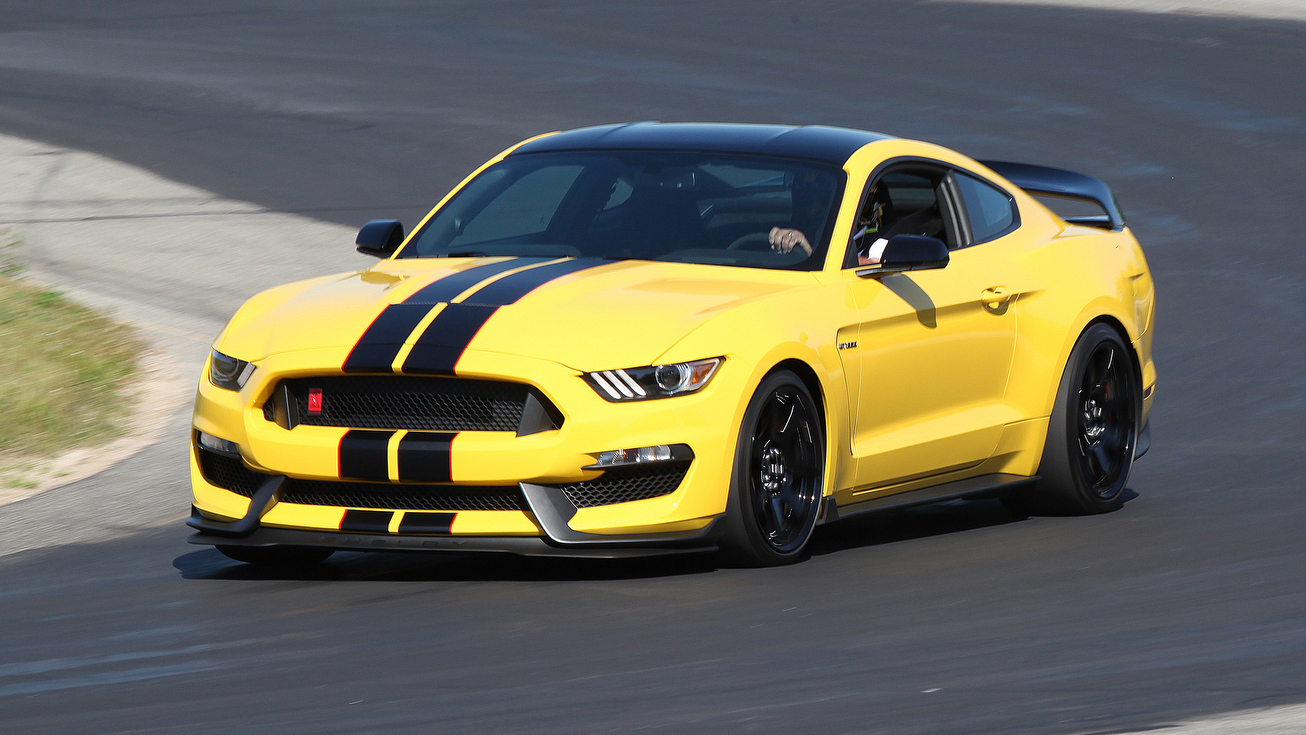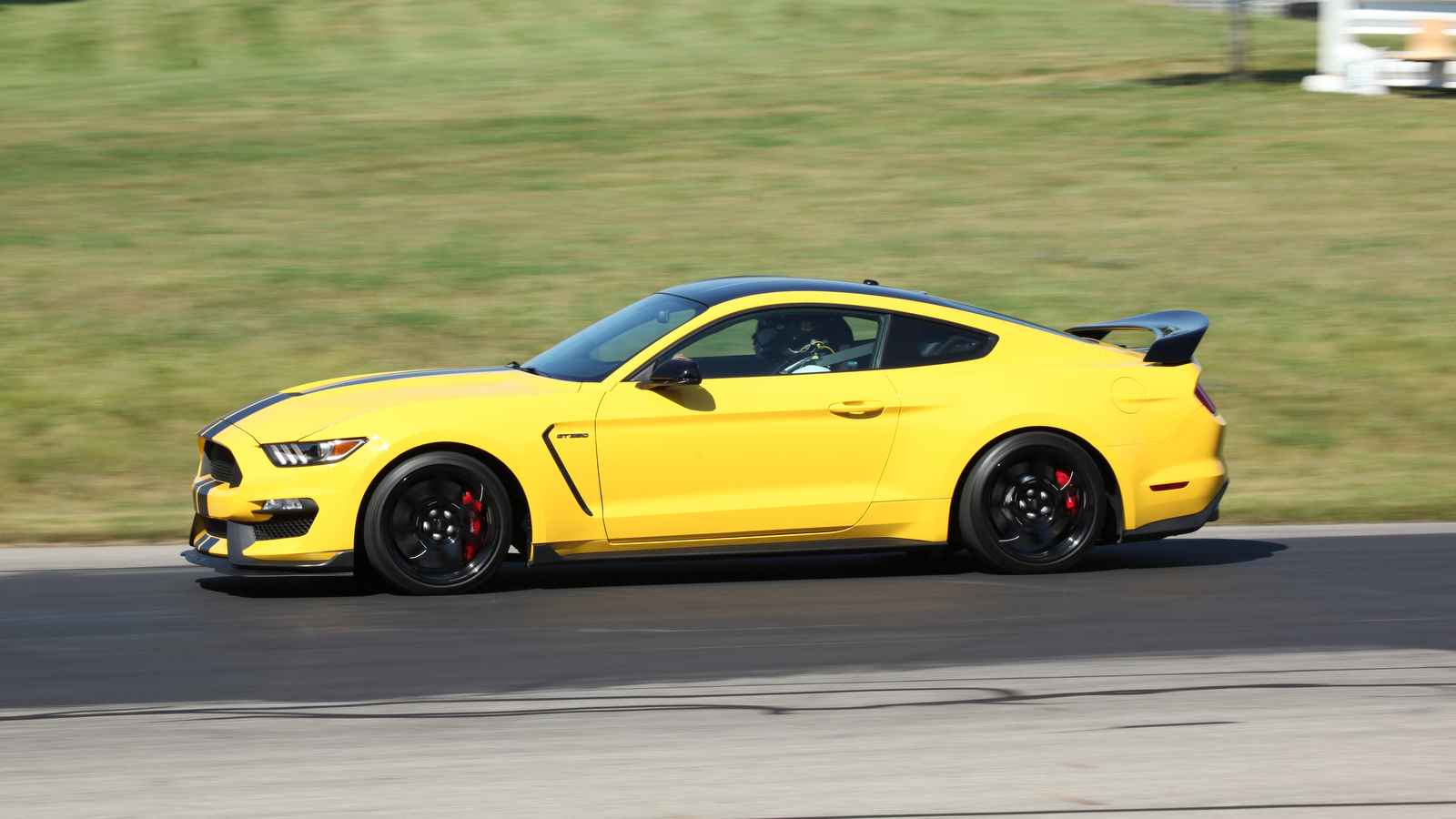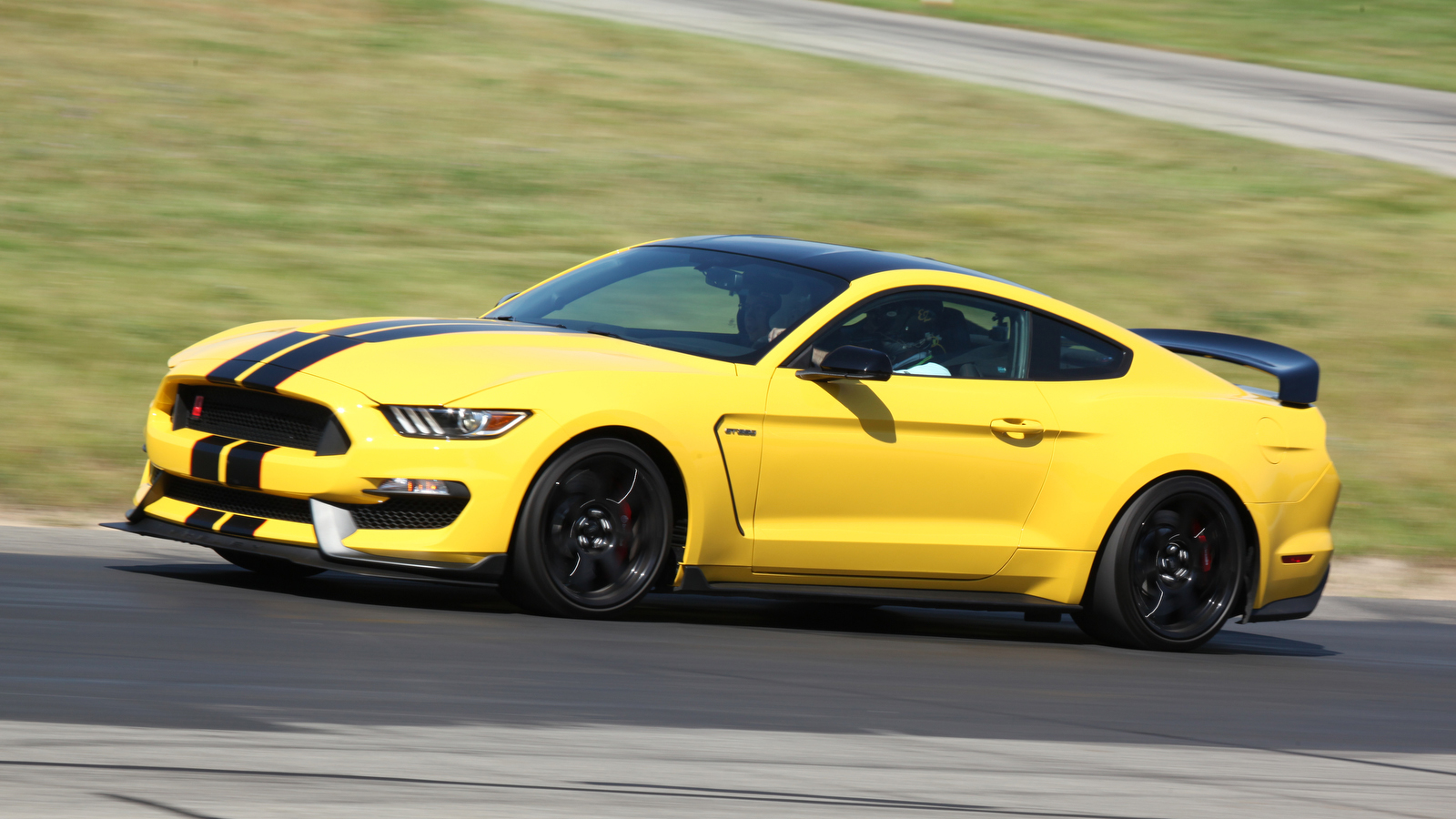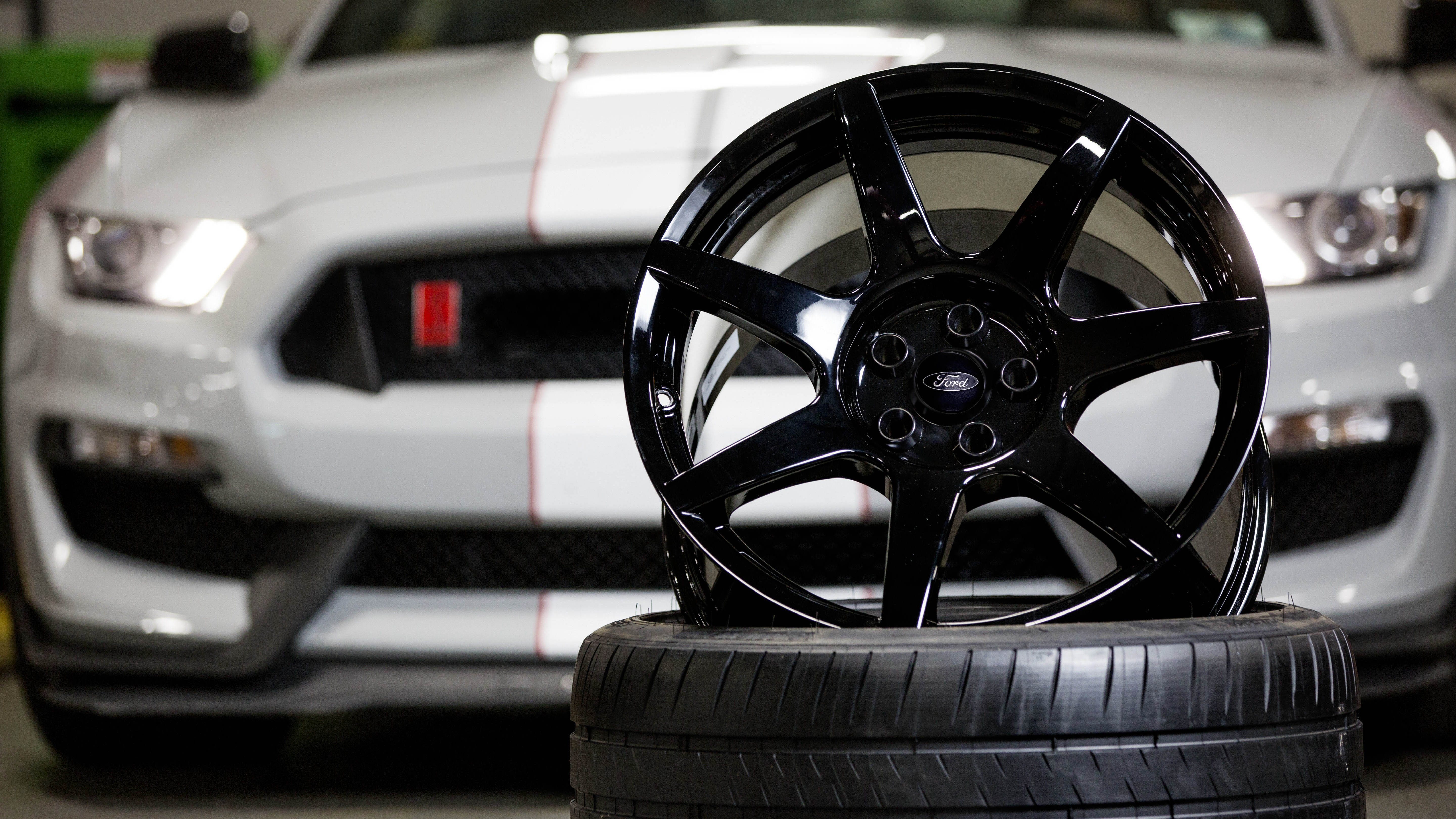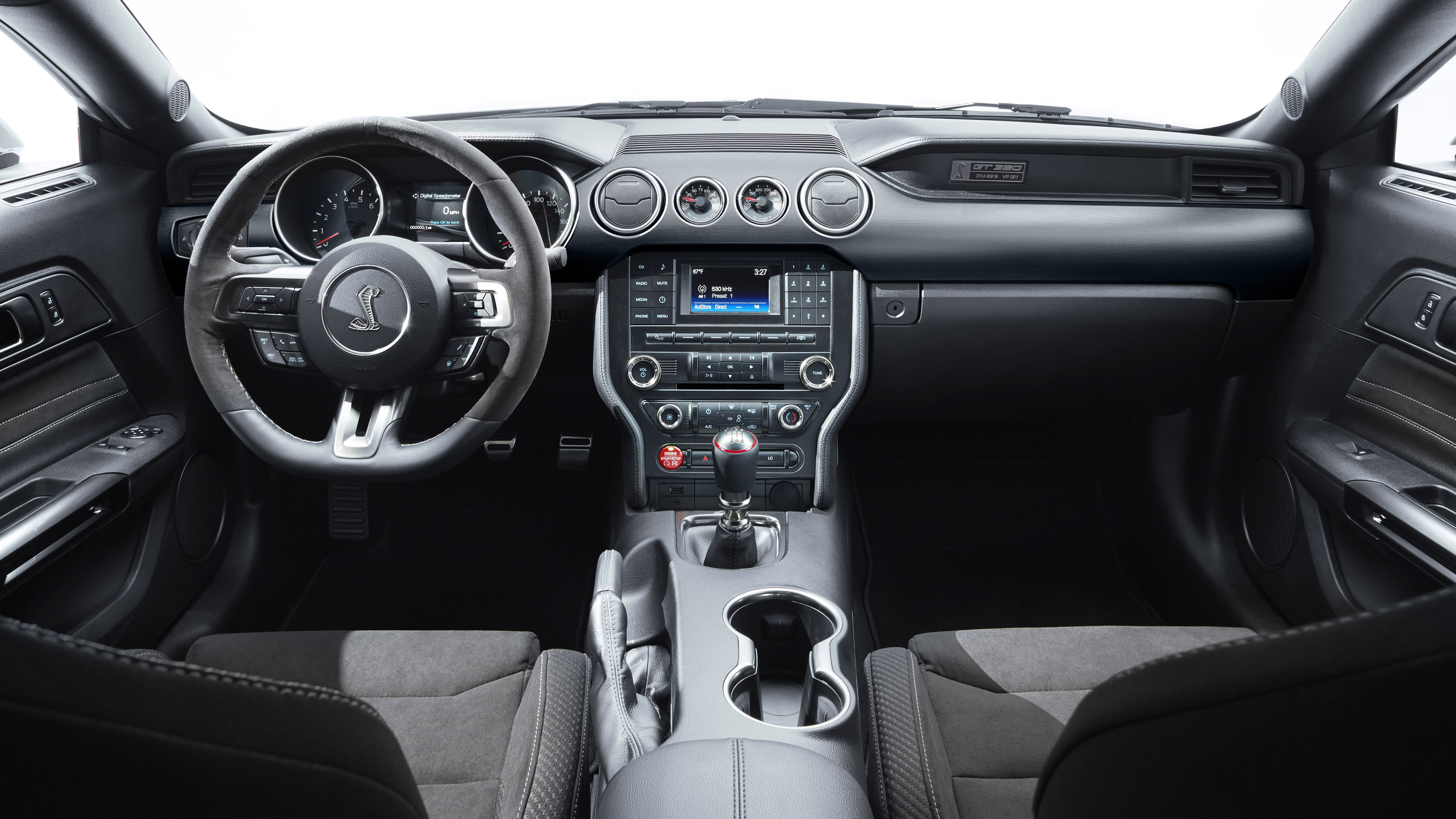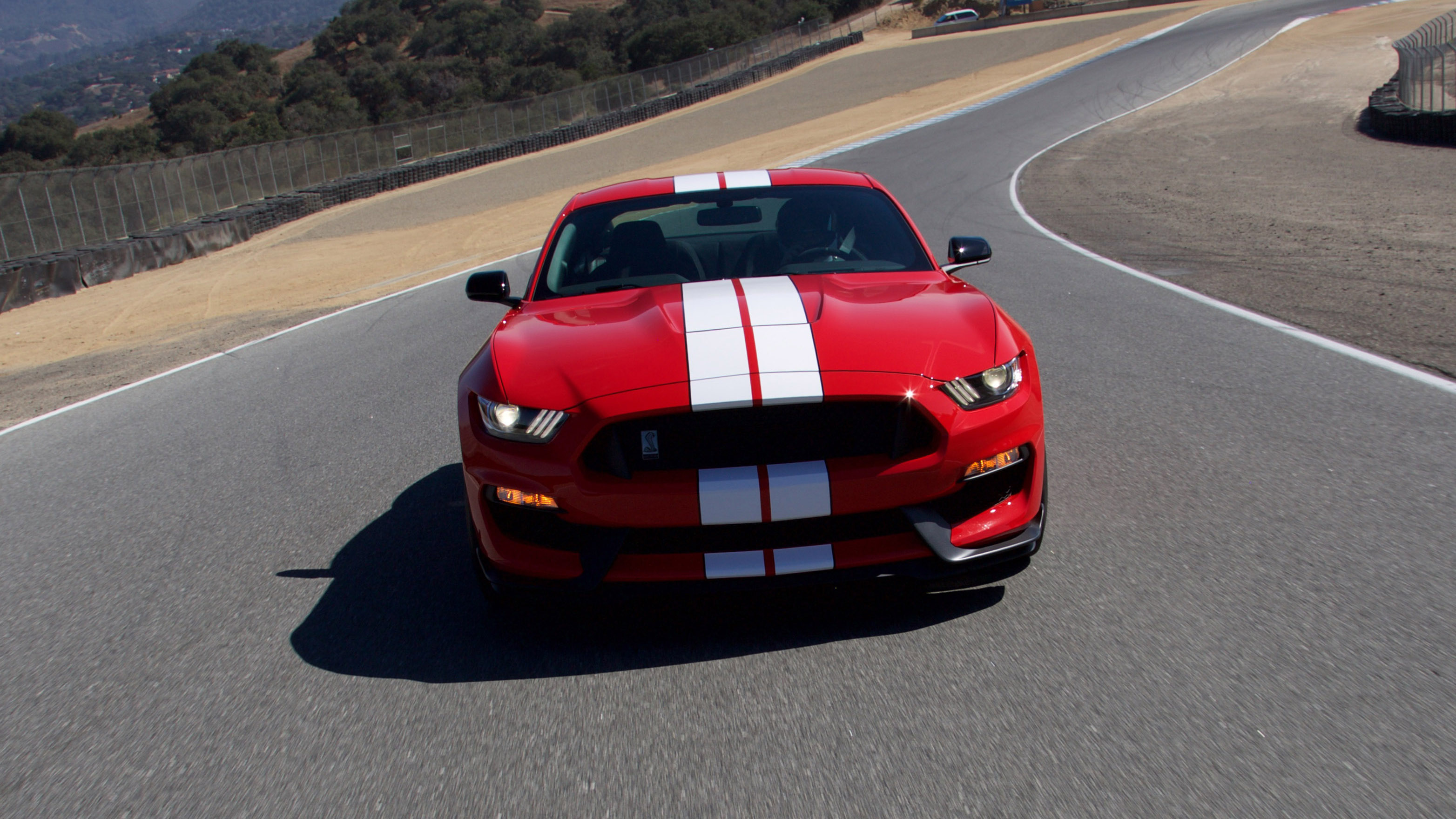
What is this?
This is the return to the Ford range of the historic Shelby GT350 nameplate. The model first joined the line up in 1965 as a high-performance variant of the Mustang GT and ran for just five years before being discontinued. Carroll Shelby’s company, Shelby American, marketed its own modified Mustang GT350 for a few years. Now Ford Performance has grabbed the name back for its new star pony car.
What about the R version?
Unlike the relatively stock standard GT350, the R cars were stripped-out specials that had everything that didn’t make them faster removed. Out went the heater, headliner, insulating materials and trim panels. The side and rear windows were replaced by lighter Plexiglass. And it worked. The car swept the field in five out of six sports car championships in its first year. So there are some pretty big expectations on any car wearing that badge.
That’s enough history, what’s the big news about the new GT350 and GT350R?
The headline about this car is the flat-plane crank 5.2-litre V8 engine. Codenamed Voodoo, it puts out 526bhp and 429 lb-ft of torque, while revving its socks off in a very non muscle car way up to a nerve-jangling 8,250prm. At first, especially on the road, it just doesn’t feel natural to rev the motor to such a high number. Not least because, even in the lower gears, you hit illegal speeds long before the engine has finished shouting its way to the top. But also because we are used to V8 muscle cars being real low and mid range punchers.
So it’s all top end then?
Nope. Despite how it looks on paper, the Voodoo does have plenty of mid range poke. It’s just that it has this extra crazy ability to rev out like a race car, too. What it doesn’t have is the typical flat-plane crank V8 instant reaction from zero revs, like the Porsche 918, Ferrari 458 and McLaren 12C. Sit at a junction and stab at the throttle and you get more of a lazy bark than an instant tacho flick to the red line.
Does it sound good?
Oh yes. It sounds great – but only when you’ve opened the exhaust valves via the dash-mounted switch. Keep this on and the car sounds like a strangled six. Flick it open and you – plus anyone within a mile radius – really start to get your money’s worth.
Top Gear
Newsletter
Thank you for subscribing to our newsletter. Look out for your regular round-up of news, reviews and offers in your inbox.
Get all the latest news, reviews and exclusives, direct to your inbox.
What about the rest of the car. What’s new?
Other than the motor, there’s a lightweight six-speed manual gearbox that is a big jump up from the regular GT’s ‘box. It has a lighter and more positive action plus there is no thump from the rear axle when you select first gear, as on the regular GT with the Performance Pack, even though there is a Torsen diff in there. So that’s real progress. As is the five-mode driver control system, similar to GM’s Performance Traction Management unit, which acts on the steering, throttle, traction control, ABS, stability control , exhaust settings and magneride dampers – these are a great addition – according to the type of driving style the driver selects. Brakes are huge – especially the rears – cross-drilled iron discs, the wheels are 19-inches front and rear and the tyres are custom made Michelin Pilot Super Sports.
How does the 350R’s spec differ from the standard GT350?
It looks subtle on paper, but the changes are huge. As with the original R car there has been some significant (130lb) weight saving here. Ticking the R spec box clears, in true GT350R fashion, all niceties like rear seats, carpet, air con, stereo, etc. You can add some of them back in if you want the racer with a radio and nav. But I can’t see much point in doing that. Would be like trying to read a book and watch a film at the same time.
Any trick technology?
One of the biggest innovations is the 350R’s carbon fibre wheels. These Australian designed hoops save a staggering 16 pounds of weight on each corner of the car. Combined with the phenomenal Michelin Pilot Sport Cup 2 tyres these two changes alone transform the standard R’s handling to a point where even some quite serious supercars might have trouble keeping up with it.
Really? How?
Add in some painstakingly detailed and thorough aero work – the R has twice the downforce of a Porsche GT3, which is a bit misleading as the GT3 doesn't need that much thanks to its rear engine configuration, but it’s a fun figure all the same – plus a reworking of all the other chassis systems and, despite the engine remaining largely the same, you have a properly special car.
So what was it like to drive?
We only drove the standard GT350 on the street and it was completely civilized. You have to just forget about that sky-high redline and enjoy the car’s quicker overall responses and composure. With everything set in road mode the steering is still quick and light and the suspension keeps everything calm and smooth. You’d be happy to drive this everyday in all conditions.
What was it like on the circuit?
Great but not amazing. After all the hype we were really expecting something special and, as fun as it was to rev out the engine and slam it through the corners, it doesn’t feel really special. Definitely a big step up from the standard Mustang GT, just not the huge leap forward many of us were expecting.
What about the R?
Like night and day. Within 10 metres of pulling away you can feel it’s going to be a riot and it doesn’t disappoint. Everything is on high alert. It's a little bit louder, a little bit crisper, lighter and much, much faster. And there’s no mystery where that extra speed is coming from – you can get out of corners so much earlier and quicker and brake so much later because you feel so confident in the car. If the GT350 is a six or seven on the confidence scale, the R is a solid nine out of 10. That’s largely down to the amazing – it’s really the right word for them – wheels and tyres, but also the zillion detail tuning adjustments to all the engine and chassis systems, too.
So should I buy one?
You’ll be lucky if you can. The standard GT350 will be tough enough to get your hands on, not least because it starts at a ludicrously low $50k. But you can forget putting an R in your garage for a couple of years yet. Ford Performance is only going to build a few hundred a year for the next several years and the waiting list is going to be several miles long. But please try all the same. Cars like this don’t come along very often – and never for just $64k – so you owe it to yourself to at least have a go in one. I guarantee you will not be disappointed.
Featured

Trending this week
- Car Review
BMW 1 Series




